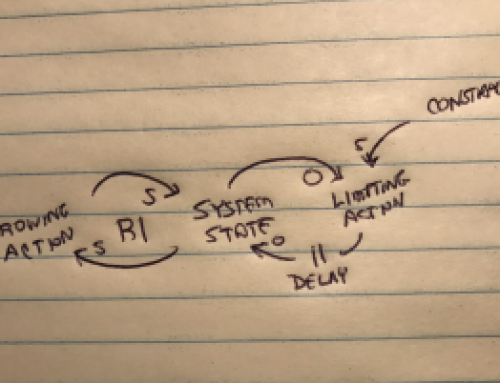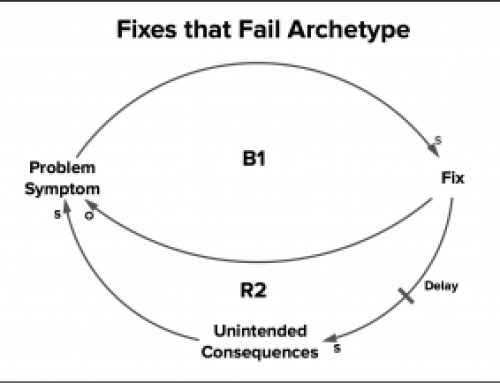My last three posts, “The Corporate Lifecycle – An Effective, Indispensable, Framework to Shape Leadership Thinking,” “What is the Corporate Life Cycle Model?,” and “The Perfect Leaders in the Life of a Corporation,” serve as an introduction to the use of the Corporate Life Cycle model to evaluate your business. Given the various choices you have in evaluating your business, ranging from your own intuition, trusting an outside firm to evaluate this for you an tell you, observations and discussions with your senior management team, and certainly examining sales and financial data, why should you consider using this model? Why does this model facilitate a more helpful view of your organization? That is what I would like to address.
Who Should Consider Using this Model?
First, it is likely helpful to consider what kind of companies or leaders may benefit from this model and what kind may find this less helpful. Based on what the Corporate Life Cycle model has to offer, I want to put forward that this model is most appropriate for a few specific types of organizations that are either in the “growing” phase, or the “aging” phase of the overall life cycle.
Growing Organizations
- Organizations that are growing rapidly but it feels like things are a bit out of control – many priorities, structure can be confusing, there is a real fear about missing key opportunities, lots of hiring, lots of energy, the sales group are the heroes, etc. (Adolescence or Go-Go)
- Organizations that are just settling into what seems to be a plateau of growth and stability – success is evident, growth still occurring but at a lower rate (not alarming yet, but you have noticed the change in the growth curve), some attrition in key staff members is surfacing due to competitive offers, less opportunities seem to be emerging organically, etc. (PRIME or Late-PRIME)
Looking at the descriptions of the first two organizations that best fit the need for a Corporate Life Cycle assessment and evaluation, you see that I have grouped those two in the “growing” phase of the life cycle. This makes asking the question “why should you do this” more difficult, because hey, you are growing. The last part of our brain to develop, at about age 25, is a portion near the front that gives us a real understanding and view of how decisions effect outcomes. In other words, we are more able to see how actions today effect tomorrow and we actually care more about those thing. So, it is not just the case of “being a teenager” and having a bad attitude. A teenager is still developing and parents MUST recognize when a teen needs guidance, have serous discussions about cause/effect, mentor, and yes, at times, simply intervene in situations to protect that growing teenager from himself or herself. One of the most vulnerable and influential times in the life of a company is during its infant, adolescent, and Go-Go stages, and in that order of significance. The corporate graveyard is littered with companies that either imploded from their own poor decisions long before reaching PRIME, or simply aged far too prematurely and never reached their full potential.
Likewise, a second key growth period is the PRIME to Late-PRIME position. This is a stage where complacency must be avoided at all cost. Complacency results in that “boiled-frog” effect as your organization just basks in the warming water until it has started to boil and kill you without you ever realizing the danger. This is a stage where competitors strike quickly, new disruptive forces appear from nowhere, and where you run the great risk of over-enjoying success.
Aging Organizations
- Organizations that have recently experienced a dramatic shift in market forces or revenue sources – growing concern over slumping growth or revenue declines, the organization seems to have been caught off-guard with market shifts or customer actions, new competitors have emerged and taken pieces of the revenue pie, new technology or new products have been introduced (disruptive), leadership senses urgency and possible pressure to make changes. (Late-PRIME or Aristocracy)
- Organizations that you would likely characterize as being in “survival model” – investors and/or CEO believes that leadership within the company is “mentally old” and stale in thinking, there is a great deal of time spent on “explaining why things don’t work” or even finger pointing, departments have become more territorial, sales people are not the heroes they once were, finance seems to be overly involved in every decision, the word “restructuring” is already widely used to communicate about possible or actual layoffs, and likely some revolving door action at leadership levels. (Aristocracy, Recrimination, possibly Bureaucracy)
These conditions are normally much more obvious, and normally compelling in terms of demanding action and results because of pressure from investors or the owner. For these stages, the issue is not a “call to action,” but simply determining the right actions. The first aging phase mentioned is an early aging stage and usually a result of complacency that went unchecked. There have been surprises, new products, new directions, new demands, or other external and sometimes internal changes that have suddenly impacted the future of the organization in a detrimental way. These may not be huge problems at first. In fact, these may be organizationally age appropriate problems. However, normal problems not addressed can easily become abnormal problems and even pathological and deadly problems without taking the time to assess and evaluate their existence and curative actions.
The second aging stage needs little explanation. The company is viewed and old and dying to some degree, and yet there may still be an overall display of loyalty to the “way it was,” pride for what was achieved in the post, and certainly lingering hope that things can be turned around.
Why Assess and Evaluate using the Corporate Life Cycle Model?
Simply put, this “life cycle” view of an organization is a framework that both fits the reality of how organizations develop over time, offers key points of reference that correlate directly to the driving leadership traits/forces at work within organizations that shape their growth and aging, offers prescriptive insights on dealing with age appropriate problems and also abnormal problems that can arise when those problems are ignored, and best delivers a clear, concise view of the repetitive patterns within organizations that can be identified, modified, and managed to promote a reinvigoration of the life cycle. I certainly recognize that many leaders are intuitively capable of thinking through many of those issues; however, the life cycle gives you a common language with your leadership team and organization and a concrete framework that promotes the very intuitive type of thinking you may already be doing.
Of course, an important contributing factor as to “why” you would do this can be found in what you are going to get out of it — the deliverables. I would suggest that committing to use the Corporate Life Cycle model to evaluate your business has the potential to deliver the following:
- Identification of your current organization age in its own life cycle and a clearer understanding of how you got there.
- Common language that you and your leadership team can use when assessing problems.
- Gain ability to see key leadership in a new light based on the mix of the four leadership traits they bring to the organization.
- Full understanding of the four key attributes of a PRIME organization and how you can focus your energy, efforts, and resources on the right things.
- Learn to identify and discriminate between age appropriate problems you can manage through vs. abnormal problems that must immediately be addressed.
- Learn how to successfully predict future problems of departments, functional business units, or the organization as a whole.
- Bring laser focus to actionable priority items that will make a measurable, positive impact on a business unit, department, or the organization as a whole.
In the end, any commitment you give to facilitating or engaging facilitation for an analysis of your organization using any model must generate decisions and action that move your organization in the right direction to enjoying a robust and long life. This corporate life cycle model brings to light forces that move your company forward or hold it back that exist at very root levels — culture, leadership forces, priorities or lack or priorities, structural inhibitors, alignment of goals and work, and strategy.
From Entrepreneur to CEO offers a complete framework and set of coaching and consulting services to get you to PRIME and keep you operating at PRIME. We call this Lead-to-PRIME and you can learn more HERE.

